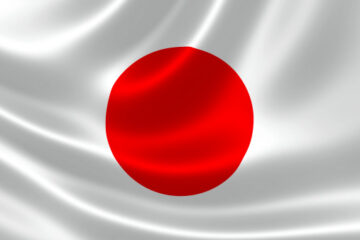As President Donald Trump’s trade war with China continues to cast strong uncertainty over the U.S. economy, many people are asking one question: How will this affect me?
For just about everyone, the answer can be boiled down to two words: higher prices. With the U.S. and China locked in a vicious tit-for-tat cycle of reciprocal tariffs, the cost of many products is expected to rise, from groceries to consumer electronics.
💵💰Don’t miss the move: Subscribe to TheStreet’s free daily newsletter 💰💵
Anytime prices start rising, consumers will inevitably look to Amazon (AMZN) , the industry leader, from which many people do the bulk of their shopping. And since the tech conglomerate receives a significant portion of its inventory from Chinese vendors, concerns have been rising that Amazon will raise its prices.
Today, Amazon reportedly announced a bold strategy to deal with tariffs, only to revise it after the White House responded with anger.
Consumers are bracing for Amazon’s prices to rise as a result of the trade war.
Image source: picture alliance/Getty Images
Amazon’s major tariff decision likely isn’t what it seems
Before markets opened this morning, a story broke from Punchbowl News that caught the attention of many people. In an edition of its Punchbowl AM newsletter, the outlet reported that Amazon had a bold new strategy to show its consumers exactly who would be paying the cost of Trump’s tariffs.
Related: Analyst raises eyebrows with Amazon stock price target ahead of earnings
While not a complete article, the write-up in the newsletter referenced a source with knowledge of the matter who claimed that in the near future, Amazon would start showing the cost imposed on each product by tariffs.
“Amazon doesn’t want to shoulder the blame for the cost of President Donald Trump’s trade war,” the newsletter states. “So the e-commerce giant will soon show how much Trump’s tariffs are adding to the price of each product, according to a person familiar with the plan.”
The outlet provided more context, adding that Amazon’s plan included displaying “how much of an item’s cost is derived from tariffs” directly next to the listed price. Such a measure would make it undeniable that tariffs impose a clear cost on consumers, despite Trump’s claims to the contrary.
Since the story broke, though, things have continued developing. White House Press Secretary Karoline Leavitt quickly responded to the news, describing it as a hostile act and framing it as being politically motivated, raising the question of why Amazon would do such a thing.
In addition, Leavitt attempted to frame Amazon as having links to China’s communist regime, holding up an article from Reuters reporting on the company’s publishing a collection of work from Chinese President Xi Jinping. She describes the article as “recent,” despite the fact that its publication date is December 17, 2021.
More Tariff News:
Nvidia could see an unexpected benefit from the trade warTariffs could lead to major nightmare for U.S. tech stocksNo, Apple iPhones won’t be made in America anytime soon
However, since the story broke, Amazon has responded to the claims, stating that it never intended to list tariff-imposed costs, at least not on its main storefront.
Amazon responds to the tariff price claims
Amazon issued its own response, telling a Washington Post reporter that despite these reports, it never intended to display the tariff-imposed cost of items on its primary webpage and has no plans to in the future.
Related: Analysts send strong message on Amazon stock amid turmoil
However, its spokesperson added that it has considered a similar initiative for Amazon Haul, its strictly mobile storefront that features heavily discounted items, typically with price tags under $20. The company reportedly provided a summary of its tariff price listing plans, stating:
“The team that runs our ultra low-cost Amazon Haul store has considered listing import charges on certain products. This was never a consideration for the main Amazon site, and nothing has been implemented on any Amazon properties.”
As of now, it remains unclear for which Amazon Haul products the company considered listing the import price duties, and the company has not offered any further context.
It’s entirely possible that this may have been a case of simple misunderstanding. Punchbowl’s source could have misinterpreted an internal memo or announcement and relayed it in a way that led to this confusion.
That said, Amazon could also have opted against the initiative when it saw the outrage from the White House and wanted to avoid retaliation from President Trump.
The most likely reason for Amazon not wanting to display tariff-imposed costs, though, is that the contrast could compel some shoppers to stop buying, realizing how little they could be paying for the items.
Related: Veteran fund manager unveils eye-popping S&P 500 forecast


